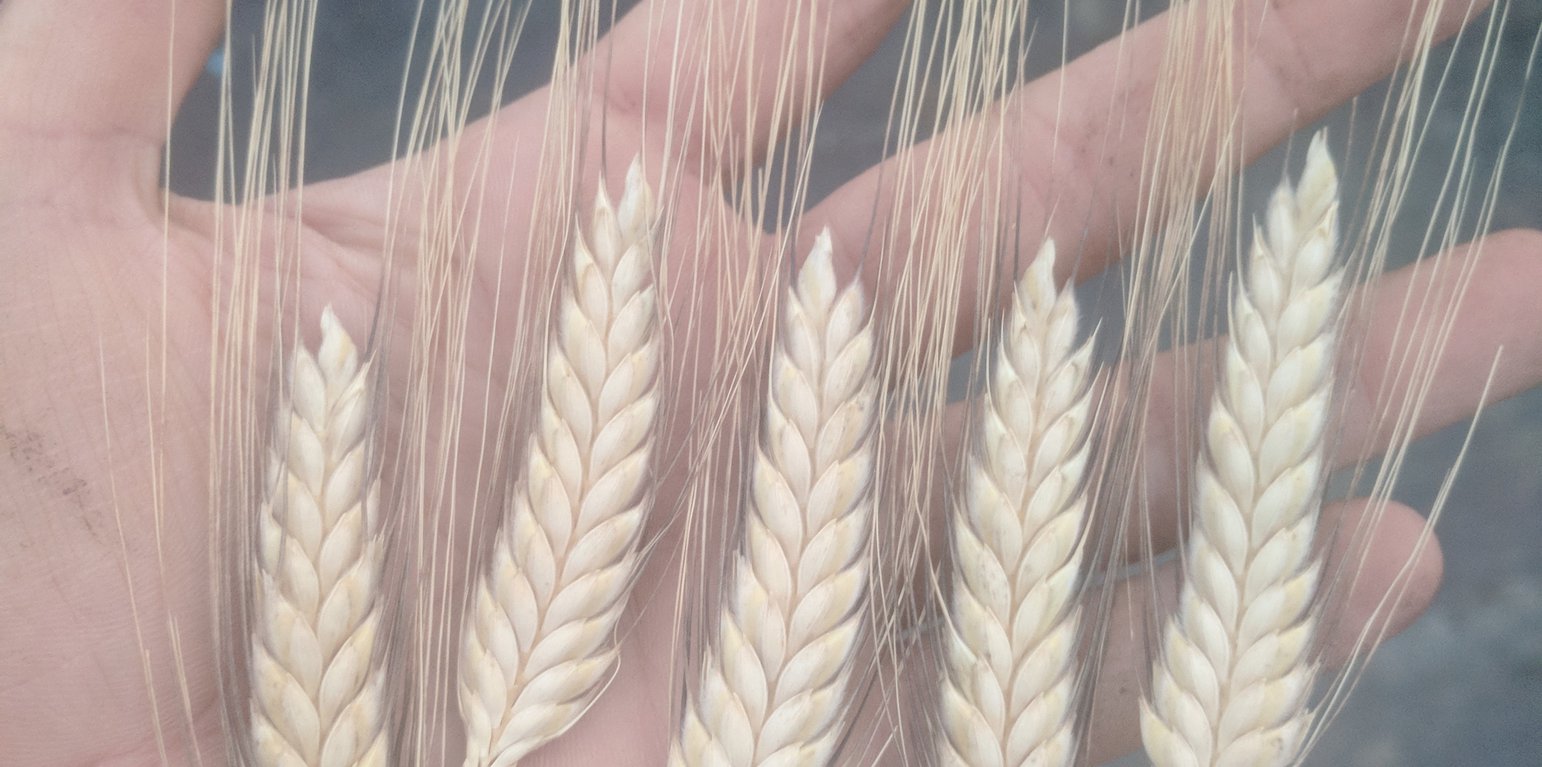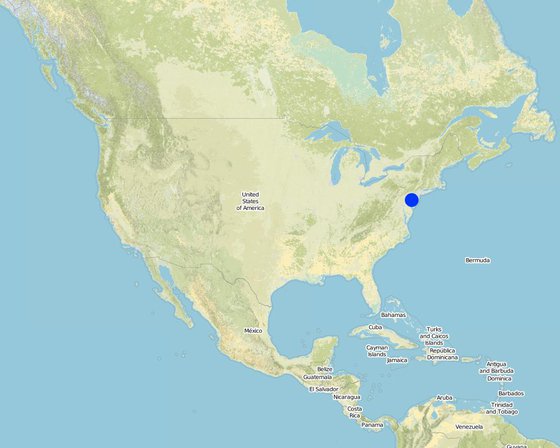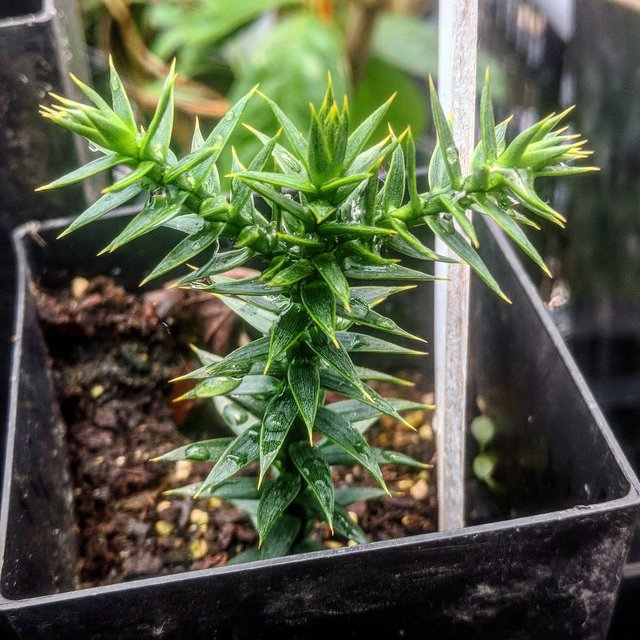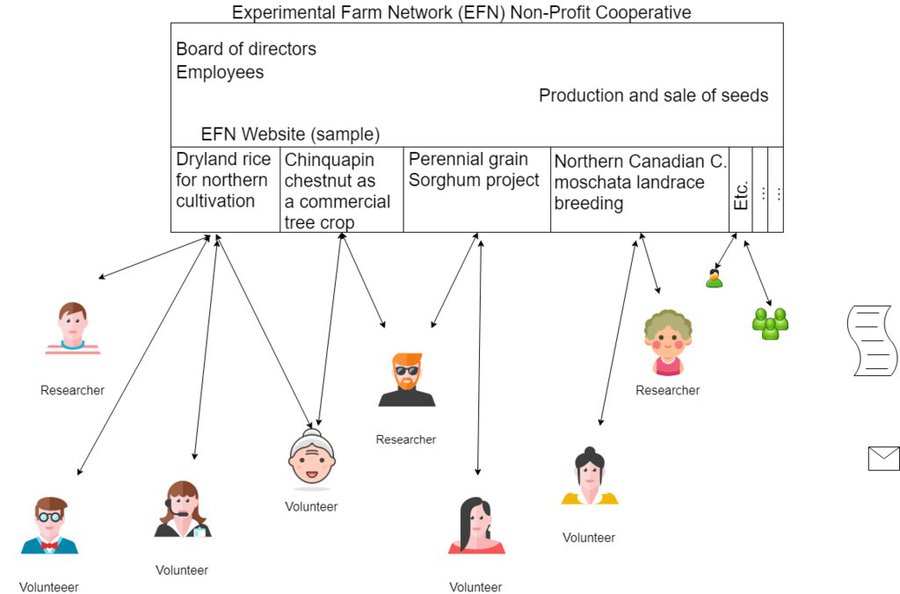



The experimental farm network started when Nate Kleinman and Dusty Hinz saw the threats of climate change, and wanted to have an agriculture able to cope with it. Breeding for crops like trees, or perennial wheat, takes decades and is often part of university programs which phase out with the retirement of the responsible person. These are the reasons which lead the two to build up a decentralized network for plant breeding and other experimental farming techniques.
The network is online based, open source, and with a free access to everyone having an internet connection. In the network, there are two positions for each project: researcher and volunteer. A researcher who wants to start a project describes the goals, the needs from the volunteers, and the required climatic and soil conditions. A volunteer, who has a profile where the growing conditions are described, can sign up for the project. The researcher can then contact the volunteers which seem suitable, and send genetic material. Usually, the work involves planting the seeds, growing it out, measuring some characteristics (size, yield, etc.) and sending a part of the seeds with some data back.
The EFN is organized as a non-profit cooperative with two permanent employees and a board of advisors. The sources of income were initially a crowdsourcing and the sale of seeds. Financially it is not yet totally self-carrying, as the employees are working sometimes for free. With the increase of seed sales, also from experimental and diverse varieties, it is changing.
The website helps putting people in touch and keeping records of who is working on which project, as well as for volunteers to stay updated with the projects. Some projects, with annuals, are only short term, while others, for example with slow growing perennials, may need decades if not more to produce a selected cultivar or variety of a crop.

Location: This is where the non-profit cooperative is registered. Projects take place around the world, in the USA, Canada and Australia so far., United States
Initiation date: 2013
Year of termination: n.a.
Type of Approach

| What stakeholders / implementing bodies were involved in the Approach? | Specify stakeholders | Describe roles of stakeholders |
| local land users/ local communities | Volunteers | Volunteers help researchers with their experiments, for example by looking out for promising wild specimen, by growing out varieties under specific conditions to assess the resistance, by selecting experimental varieties, or by similar work. |
| community-based organizations | The non-profit cooperative "Experimental Farm Network" | Provides an online platform where researchers and volunteers can meet. |
| researchers | Researchers | They can find volunteers if more people are needed to carry out an experiment, specially in plant breeding for sustainable farming. |
The Experimental Farm Network is organised as a Non-Profit Cooperative. It consists of a board of directors overseeing the the whole, and of employees. The EFN lives from donations and from the sale of seeds which are cultivated on kindly lent land.
The EFN has a website, experimentalfarmnetwork.org, on which researchers can create an account describe projects for which they want volunteers. Volunteers can also creat an account, on which they describe their soil and climatic conditions. Researchers can then contact volunteers and ask them for help. The work for the volunteer often involves growing recieved seeds and send back records about the growth, and send back seeds to the researcher. The volunteers and researcher can connect trough the website, but some work as well trough other networks like facebook.

Decisions were taken by
Decisions were made based on
Depending on the crop grown, the researcher helps with information about how best to grow it.
Breeding is always research for better adapted crops or varieties.
Depending on the project, seeds are given and a return of the subsequent generation asked.
Labour by land users was